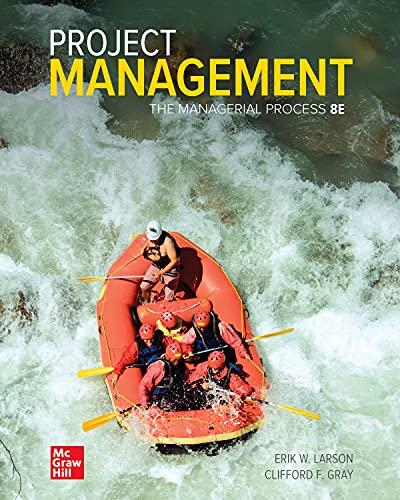Answered step by step
Verified Expert Solution
Question
1 Approved Answer
1. Dolphins breathe in air through their blowhole at the surface of the water, and then dive into the depths to play, hunt, and
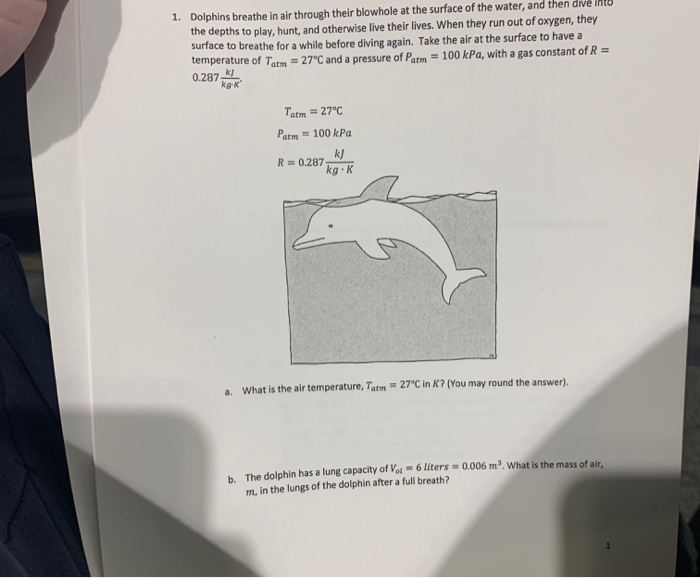
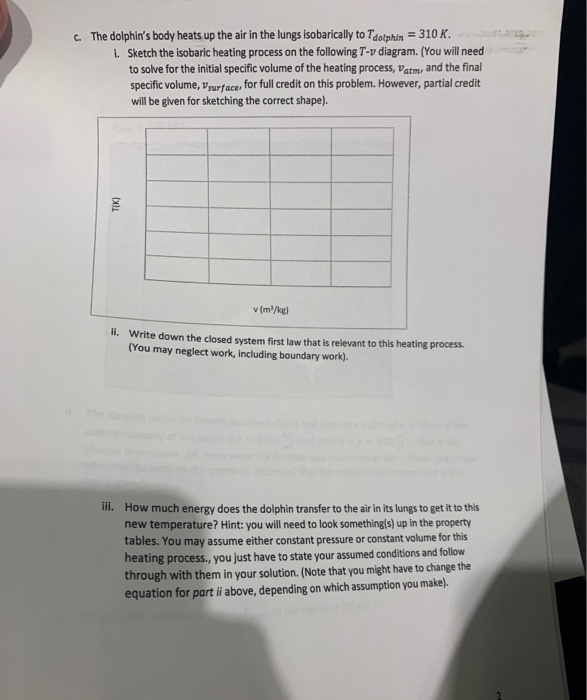
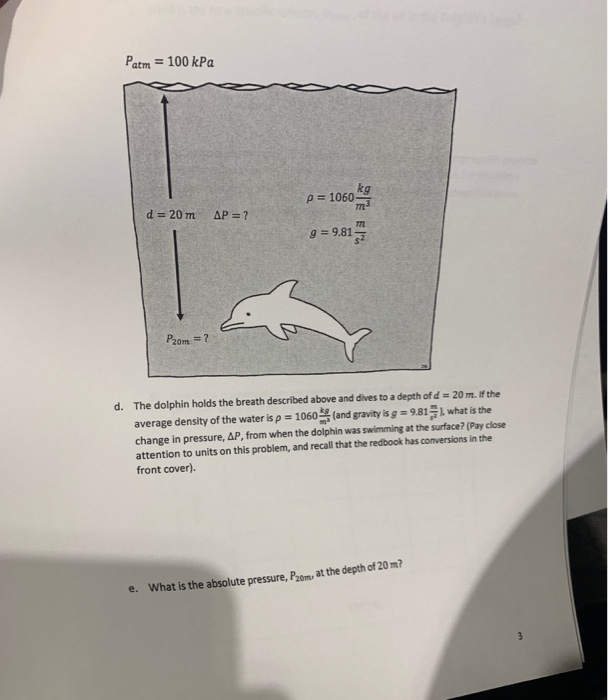

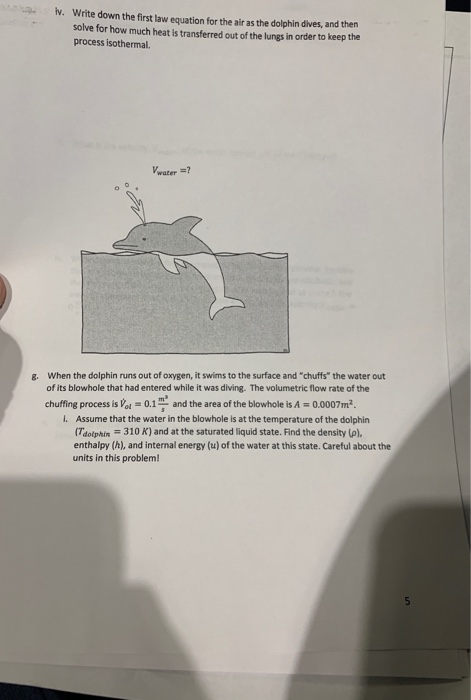
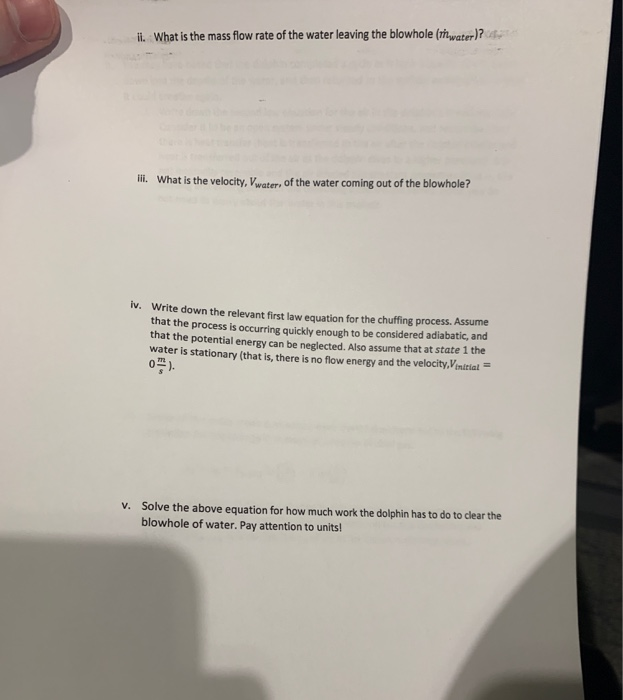
1. Dolphins breathe in air through their blowhole at the surface of the water, and then dive into the depths to play, hunt, and otherwise live their lives. When they run out of oxygen, they surface to breathe for a while before diving again. Take the air at the surface to have a temperature of Tatm = 27C and a pressure of Patm = 100 kPa, with a gas constant of R = kj 0.287 kg-k Tatm = 27C Patm= 100 kPa R= 0.287- kJ kg-K a. What is the air temperature, Tatm = 27C in K? (You may round the answer). b. The dolphin has a lung capacity of Vot 6 liters = 0.006 m. What is the mass of air, m, in the lungs of the dolphin after a full breath? c. The dolphin's body heats up the air in the lungs isobarically to Tdolphin = 310 K. 1. Sketch the isobaric heating process on the following T-v diagram. (You will need to solve for the initial specific volume of the heating process, atm, and the final specific volume, vsurface, for full credit on this problem. However, partial credit will be given for sketching the correct shape). T(K) v (m/kg) ii. Write down the closed system first law that is relevant to this heating process. (You may neglect work, including boundary work). iii. How much energy does the dolphin transfer to the air in its lungs to get it to this new temperature? Hint: you will need to look something(s) up in the property tables. You may assume either constant pressure or constant volume for this heating process., you just have to state your assumed conditions and follow through with them in your solution. (Note that you might have to change the equation for part ii above, depending on which assumption you make). Patm = 100 kPa d = 20 m P20m=? = ? p=1060 kg 772 E 771 9 = 9.81 = 9.817 d. The dolphin holds the breath described above and dives to a depth of d = 20 m. If the average density of the water is p = 1060 (and gravity is g = 9.811, what is the change in pressure, AP, from when the dolphin was swimming at the surface? (Pay close attention to units on this problem, and recall that the redbook has conversions in the front cover). e. What is the absolute pressure, Pzom, at the depth of 20 m? 3 f. Assume that as the dolphin was diving, the air in its lungs stayed at the same temperature (Tdolphin = 310 K), while the increasing pressure of the surrounding water compressed the air. i. What is the new specific volume, 20m, of the air in the dolphin's lungs? ii. Solve for how much work, W, is done on the air during the compression process (i.e. as the dolphin swims to the new depth) using the equation for boundary work per mass is: w=0m Pdv. (Note that the equation sheet has some Jusurface useful equations for this integration). iii. Sketch the isothermal compression process on the following P-v diagram. Add your own labels (just for the starting and ending values). P (kPa) v (m/kg) iv. Write down the first law equation for the air as the dolphin dives, and then solve for how much heat is transferred out of the lungs in order to keep the process isothermal. Vwater =? 8. When the dolphin runs out of oxygen, it swims to the surface and "chuffs" the water out of its blowhole that had entered while it was diving. The volumetric flow rate of the chuffing process is Vol = 0.1 and the area of the blowhole is A = 0.0007m. I. Assume that the water in the blowhole is at the temperature of the dolphin (Tdolphin = 310 K) and at the saturated liquid state. Find the density (p), enthalpy (h), and internal energy (u) of the water at this state. Careful about the units in this problem! 5 ii. What is the mass flow rate of the water leaving the blowhole (mwater)? iii. What is the velocity, Vwater, of the water coming out of the blowhole? iv. Write down the relevant first law equation for the chuffing process. Assume that the process is occurring quickly enough to be considered adiabatic, and that the potential energy can be neglected. Also assume that at state 1 the water is stationary (that is, there is no flow energy and the velocity,Vinitial = 0). v. Solve the above equation for how much work the dolphin has to do to clear the blowhole of water. Pay attention to units!
Step by Step Solution
★★★★★
3.51 Rating (151 Votes )
There are 3 Steps involved in it
Step: 1
The det...
Get Instant Access to Expert-Tailored Solutions
See step-by-step solutions with expert insights and AI powered tools for academic success
Step: 2

Step: 3

Ace Your Homework with AI
Get the answers you need in no time with our AI-driven, step-by-step assistance
Get Started


